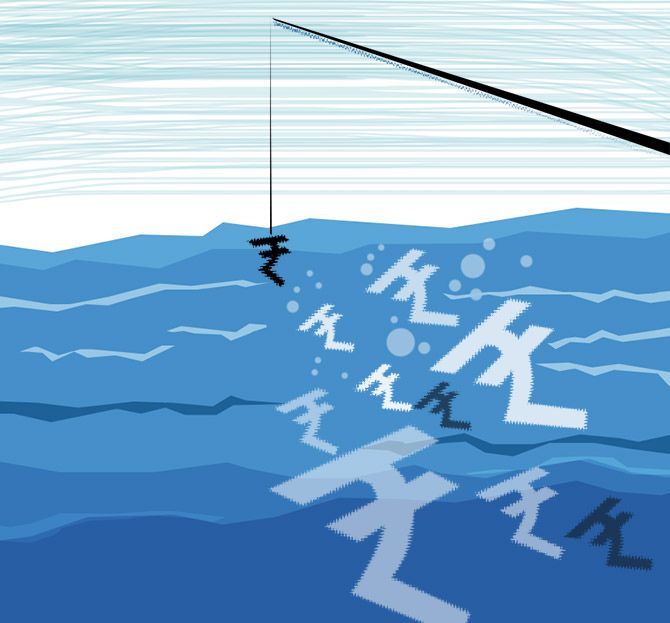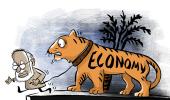While the bond market is relatively conservative about their interest rate expectations, the currency market seems to be projecting that interest rates should be much sharper.
Illustration: Dominic Xavier/Rediff.com

There is a divergence between what the currency market thinks about interest rates and what the bond market perceives where rates are headed.
While the bond market is relatively conservative about their interest rate expectations, the currency market seems to be projecting that interest rates should be much sharper.
However, this could be an anomaly caused by local factors, which should correct in the coming months, experts say.
The currency market gauge rates in the form of one-year forwards premium.
The forward premium is the interest rate differential between India and the US, from where dollar flows in.
Hedgers pay the premium to book their future dollar receivables.
For bond market, the same interest rate differential is gauged by the difference between domestic overnight indexed swaps (OIS) and the US OIS.
The OIS is essentially daily average interbank call rates extrapolated to a year.
Normally, the one-year forwards and the OIS difference should converge and the difference should not be more than 10-15 basis points, or even 20-25 basis points in time of extreme uncertainties.
But now, the difference is about 85 basis points.
According to Samir Lodha, managing director of QuantArt, the difference has occurred because of the large exposure norms of the Reserve Bank of India (RBI).
“Banks are not able to keep dollars in their nostro account for long and they are selling it in the spot market, which is pushing up prices for future dollars, as reflected by the rising forward premium,” Lodha said.
This means that hedging cost is going up for companies and non-banking financial companies (NBFCs), in need of cheap sources of funds from overseas.
The one-year forwards rates are now at 4.7 per cent.
While this is no means a very high rate, but considering that the rates had touched 3.5 per cent in mid-March, the climb has been sharp.
The rates crashed in March following announcement of dollar swaps by the Reserve Bank.
The central bank did two swaps worth $5 billion each, but despite market expectations, the RBI did not do any more swaps.
This again jacked up forwards rates.
According to Lodha, the rise in hedging cost is going to trouble the NBFCs the most since they look for long term funding of external commercial borrowings and had to hedge the money.
The impact is not that much in shorter tenure such as in one month and three months, which is used by importers to hedge.












 © 2025
© 2025